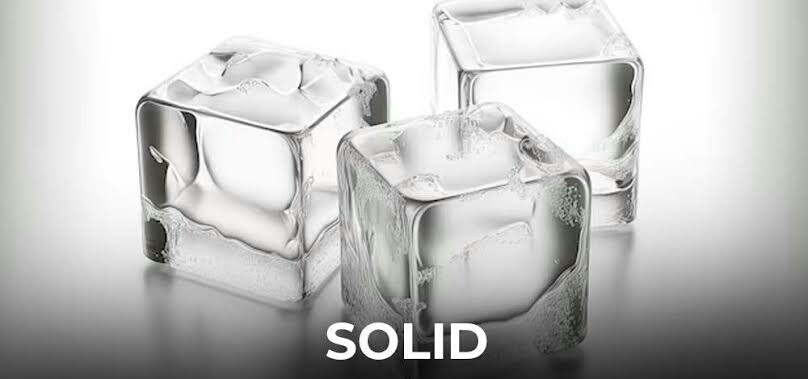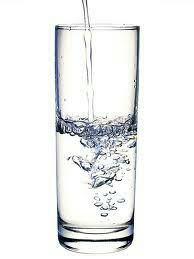Changes in state of matter in daily life ~ physics project
Changes in state of matter in daily life
INTRODUCTIONI am presenting this project assignment on the topic ............
In this project I have tried to give all the important things and information.
Nearly every substance can exist as a solid, a liquid, or a gas. These are the three common states of matter. Whether a substance is a solid, a liquid, or a gas depends on its temperature and the pressure placed on it. Any change in phase is accompanied by the taking in or release of heat energy because, as change takes place, the attractive forces between molecules are being broken down or being formed.
States of Matter
It has been observed that matter exists in nature in different forms. Some substances are rigid and have a fixed shape like wood and stone; some substances can flow and take the shape of their container like water, while there are forms of matter that do not have definite shape or size such as air.
Matter can be classified into different categories based on the physical properties exhibited by them and the states in which they exist; these are called states of matter.
Following are the basic three states of matter:
- Solid
- Liquid
- Gas
Solid :
- In solids, particles are tightly or closely packed.
- The gaps between the particles are tiny and hence it is tough to compress them.
- Solid has a fixed shape and volume.
- Due to its rigid nature, particles in solid can only vibrate about their mean position and cannot move.
- Force of attraction between particles is adamant.
- The rate of diffusion in solids is very low.
- An example of solids: solid ice, sugar, rock, wood, etc.
Liquid :
- In a liquid state of matter, particles are less tightly packed as compared to solids.
- Liquids take the shape of the container in which they are kept.
- Liquids are difficult to compress as particles have less space between them to move.
- Liquids have fixed volume but no fixed shape.
- The rate of diffusion in liquids is higher than that of solids.
- Force of attraction between the particles is weaker than solids.
- Example of a liquid state of matter: water, milk, blood, coffee, etc.
Gas :
- In gases, particles are far apart from each other.
- Force of attraction between the particles is negligible, and they can move freely.
- Gases have neither a fixed volume nor a fixed shape.
- The gaseous state has the highest compressibility as compared to solids and liquids.
- The rate is diffusion is higher than solids and liquids.
- The kinetic energy of particles is higher than in solids and liquids.
- An example of gases: air, helium, nitrogen, oxygen, carbon dioxide, etc.
Change of state of matter
Changes of state are physical changes in matter. They are reversible changes that do not involve changes in matter’s chemical makeup or chemical properties. Common changes of state include melting, freezing, sublimation, vaporization, condensation and deposition.
Melting ( Solid to Liquid )
Melting is the process by which a substance undergoes a change from solid to liquid. Pure crystalline solids have a fixed temperature at which they melt. This temperature is called their melting point. It varies from one substance to another. On the other hand, an impure solid’s change from solid to liquid occurs over a range of temperatures under the principal constituent’s melting point.
Freezing ( Liquid to Solid )
Freezing can be defined as a process through which there is a change in a substance from the liquid state to the solid state. Freezing is experienced by all liquids except helium, which occurs when the temperature decreases sufficiently. The temperature at which this freezing of a substance occurs is called its freezing point, which for water is equal to 0°C (32°F).
Sublimation (Solid to Gas)
Sublimation is defined as the process where matter transitions from a solid state to a gaseous state without crossing the intermediate liquid state.
Vaporization ( Liquid to Gas )
Vaporization can be defined as the process by which molecules of matter spontaneously change from a state of liquid to a gaseous state. It is called boiling if conditions allow the formation of bubbles within a liquid during the process of vaporization. Heat is the main factor responsible for the vaporization of a substance. If the heat in the surroundings is not enough, the system itself may produce it by the process of temperature reduction.
Condensation (Gas to Liquid )
Condensation may be defined as the process by which there is a change in the gaseous state of matter into a liquid state. It is the reverse of the process of vaporization, and here the heat is liberated into the surroundings by the condensing vapour.
Deposition (Gas → Solid)
Deposition can be defined as the process by which particles settle or sediment onto a surface. The particles may originate from a solution, suspension, vapour, or mixture. During the process of deposition, there is also a change in the state of matter from the gaseous state to the solid state.
Change of state of matter in daily life
Melting :
i) An ice cube turning into liquid water when you set it on a surface, or hold it in your hand.
ii) When heat from a stovetop is added to a block of butter in a pan, the butter will begin to melt and turn into a liquid.
Freezing :
Water-filled in an ice cube tray, when kept in the freezer, changes into solid, so here the water freezes to form ice cubes.
Sublimation :
i) When exposed to air , size of moth balls will decrease, the solid balls diffuse in the air through sublimation and change its state from solid to gas.
ii) Solid air fresheners used in washrooms and cars sublime into the gaseous state. The particles of gas , on moving through the room brings about a good smell.
Vaporization :
Washed or wet clothes are dried by evaporation. When the clothes are hung outside in the sun, due to the heat of the sun, the water droplets present in the clothes get dried away due to evaporation.
Condensation :
i) Morning Dew – This happens when the moisture present in the air condenses on the grasses and leaves cooling overnight.
ii) Droplets on can or bottle – The cold surface of can or bottle causes the moisture in the warm air to condense on its surface.
Deposition :
The formation of frost, which occurs when water vapour (gaseous form) in the atmosphere changes directly into ice.
Conclusion
It was a wonderful and learning experience for me while working on this project. I tried my best to include all the necessary points that are required related to the given topic. Some of the information I wrote in the project were taken from the internet and I have also referred to some books. I do hope that my project will be interesting and may be even knowledgeable.














Comments
Post a Comment